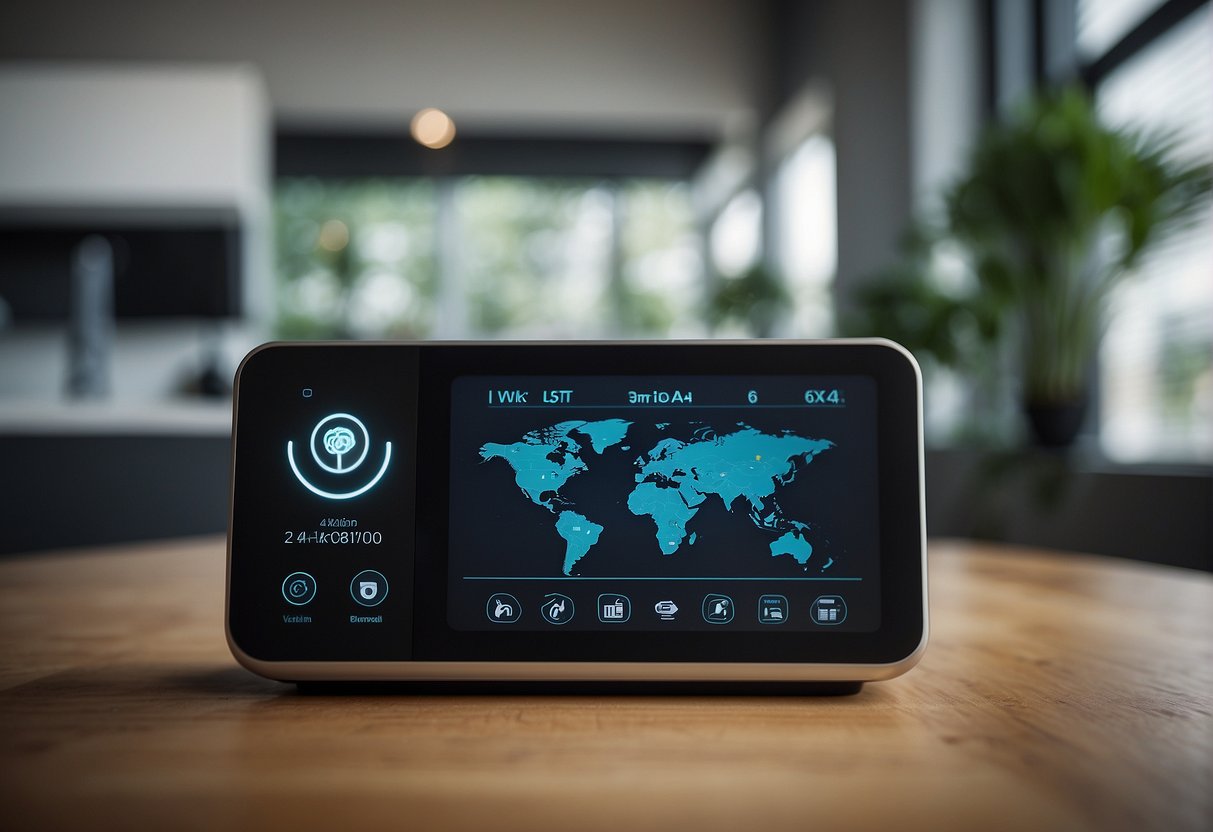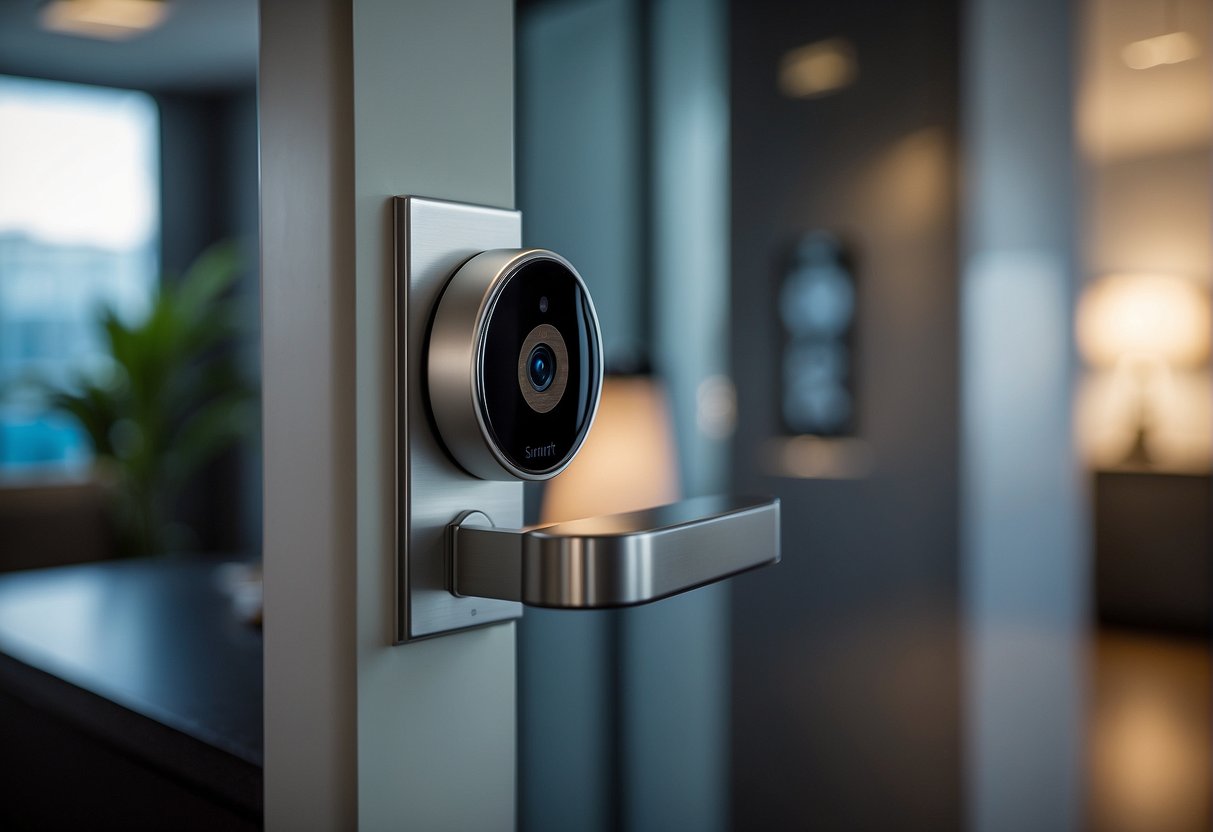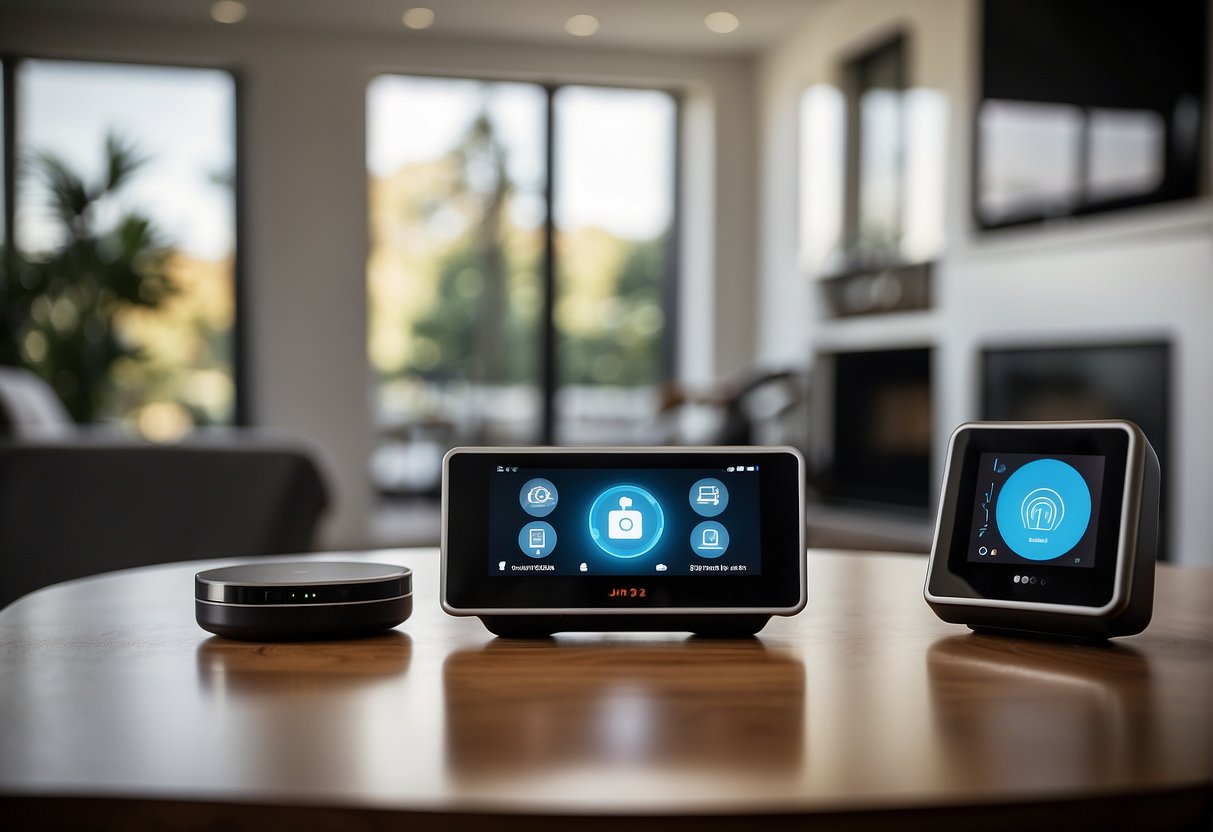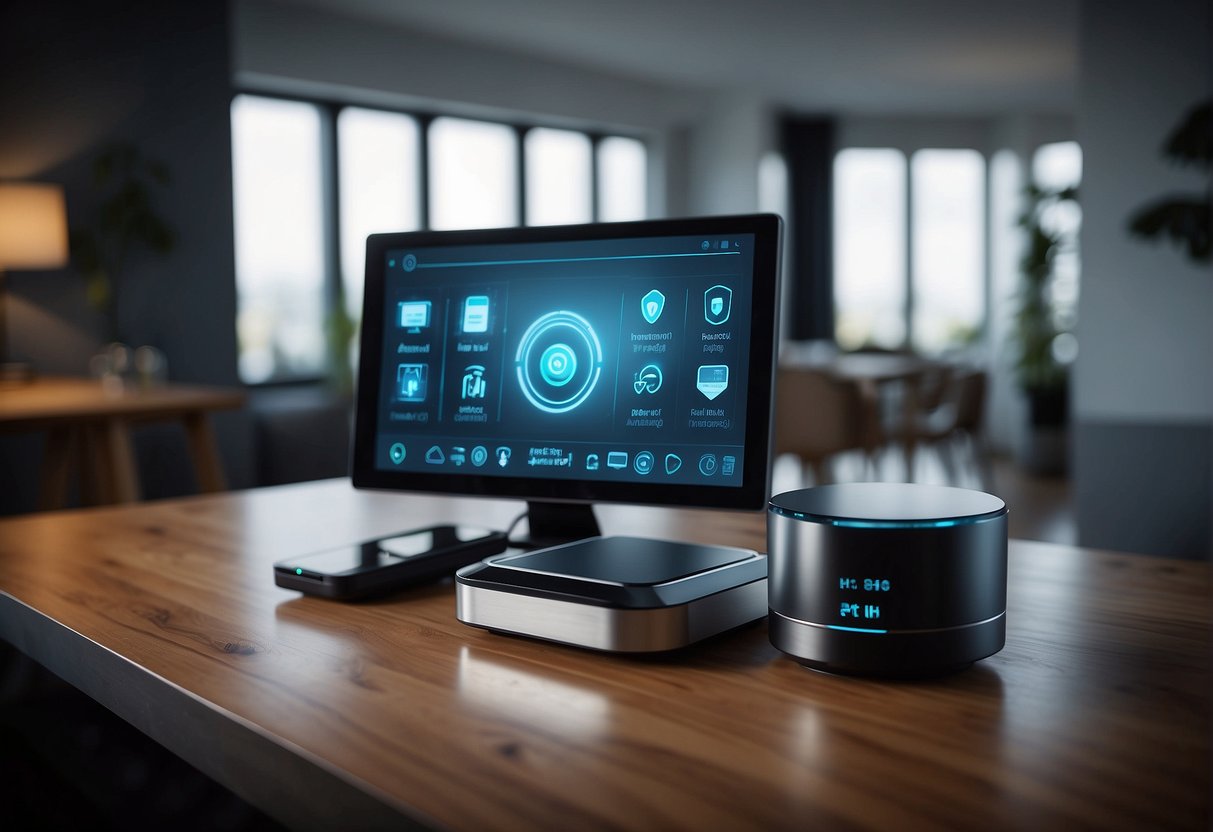Smart home devices are becoming more prevalent in households, offering convenience and increased control over various aspects of daily life. However, with the proliferation of these devices comes an increased risk of security breaches.
As smart home devices become more interconnected and reliant on the Internet of Things (IoT), it is crucial to address the top IoT security challenges to ensure that these devices remain safe and secure.
Understanding IoT and Its Impact on Smart Home Security
The IoT is a vast network of interconnected devices that collect and share data, providing new ways to enhance human life and digitize industrial processes. In the context of smart homes, IoT technology allows for temperature monitoring, smoke detection, automatic light control, and other features that can improve the overall living experience.
However, the interconnectivity of these devices also creates potential security vulnerabilities that can be exploited by hackers.

The IoT Ecosystem and Smart Home Devices
Smart home devices are a subset of the IoT ecosystem that are designed to make homes more convenient, energy-efficient, and secure. These devices include smart thermostats, security cameras, door locks, and lighting systems, among others. They are connected to the internet and can be controlled remotely through a smartphone app or a voice assistant.
Security Risks Associated with IoT
The security risks associated with IoT devices are significant and varied. Some of the most common security risks include:
- Weak passwords: Many IoT devices come with default usernames and passwords that are easy to guess or crack. This makes them vulnerable to brute-force attacks and other types of hacking.
- Outdated software: IoT devices often run on outdated software that is no longer supported by the manufacturer. This makes them vulnerable to known security vulnerabilities that can be exploited by hackers.
- Lack of encryption: Many IoT devices do not encrypt the data they transmit, making it easy for hackers to intercept and read the data.
- Malware infections: IoT devices can be infected with malware, which can be used to steal data, launch attacks on other devices, or turn the device into a bot in a botnet.
Key IoT Security Challenges in Smart Homes

Smart homes are becoming increasingly popular with the rise of the Internet of Things (IoT). IoT refers to the network of physical devices, vehicles, home appliances, and other items that are embedded with software, sensors, and connectivity. The IoT ecosystem allows these devices to connect and exchange data with each other, creating a seamless and automated experience for users.
Device Authentication and Access Control
One of the biggest challenges in securing smart home devices is ensuring that only authorized users can access them. This requires robust device authentication and access control mechanisms that can prevent unauthorized users from gaining access to sensitive data or controlling devices.
To achieve this, manufacturers need to implement strong authentication protocols that can verify the identity of users and devices. This can include biometric authentication, two-factor authentication, or other secure authentication mechanisms. Additionally, access control policies should be implemented to ensure that only authorized users can access specific devices or data.
Network Security and Connectivity
Another significant challenge in securing smart homes is ensuring the security and reliability of the network infrastructure that connects these devices. Smart homes rely on a range of networking technologies such as Wi-Fi, Bluetooth, and Zigbee, which can be vulnerable to attacks if not properly secured.
To address this, manufacturers need to implement robust network security mechanisms that can protect against common threats such as man-in-the-middle attacks, packet sniffing, and denial-of-service attacks. This can include using encryption technologies such as SSL/TLS, implementing firewalls, and using secure communication protocols.
Data Privacy and Protection
Finally, data privacy and protection are critical concerns in smart homes, as these devices collect and transmit sensitive data such as user preferences, home automation settings, and personal information.
Manufacturers need to implement robust data privacy and protection mechanisms that can ensure the confidentiality, integrity, and availability of this data. This can include implementing data encryption technologies such as AES or RSA, using secure data transmission protocols such as HTTPS or MQTT, and ensuring that data is stored securely and backed up regularly.
Strategies for Enhancing IoT Security

Smart home devices have become increasingly popular in recent years, making our lives more convenient and comfortable. However, with the rise of these devices, security concerns have also increased. In this section, we will discuss some strategies that can be implemented to enhance IoT security in smart home devices.
Implementing Robust Protocols and Standards
One of the most effective ways to enhance IoT security is to implement robust protocols and standards. These protocols and standards should be designed to ensure that the smart home devices are secure and reliable.
For example, the use of the Transport Layer Security (TLS) protocol can help to secure the communication between the smart home devices and the cloud server. Additionally, the implementation of the Advanced Encryption Standard (AES) can help to protect the data transmitted between the devices.
Regular Firmware Updates and Patch Management
Smart home devices are vulnerable to security threats, and firmware updates and patch management are essential to ensure that the devices are secure.
Regular firmware updates can help to fix any security vulnerabilities that may be present in the devices. Additionally, patch management can help to ensure that any security patches are applied promptly.
Advanced Encryption and Secure Communication
Advanced encryption and secure communication are essential to ensure that smart home devices are secure.
Encryption can help to protect the data transmitted between the devices, while secure communication can help to prevent unauthorized access to the devices.
For example, the use of the Secure Sockets Layer (SSL) protocol can help to secure the communication between the devices and the cloud server.
The Role of Manufacturers and Developers

Smart home devices have become an integral part of modern households, and their use is only expected to increase in the coming years. However, with the rise of these devices, there is also a growing concern about their security. Manufacturers and developers play a crucial role in ensuring the security of IoT devices and addressing the top security challenges.
Ensuring Secure IoT Device Architecture
One of the primary responsibilities of manufacturers and developers is to ensure that the IoT device architecture is secure. This includes designing devices that are resistant to hacking and other cyber threats.
Manufacturers must also ensure that their devices are updated regularly to address any newly discovered vulnerabilities.
To achieve this, manufacturers and developers should invest in secure software development practices and use secure coding standards. They should also consider using trusted platforms and frameworks to build their devices.
Additionally, manufacturers should opt for hardware-based security solutions, such as secure boot and trusted execution environments, to protect against tampering and unauthorized access.
Promoting Best Practices and Security Awareness
Manufacturers and developers should also promote best practices and security awareness among their customers.
This includes educating users on the importance of regularly updating their devices, creating strong passwords, and avoiding suspicious emails and links.
Manufacturers should also provide clear instructions on how to set up and use their devices securely. This can include providing guidance on how to change default passwords, enabling two-factor authentication, and disabling unnecessary features that could pose a security risk.
Future Trends and Evolving Technologies in IoT Security

Blockchain and IoT Security
Blockchain technology is becoming increasingly popular in the field of IoT security. It offers a decentralized approach to security, which makes it difficult for hackers to compromise the system.
With blockchain, all transactions are recorded on a distributed ledger, which is tamper-proof and transparent. This means that any changes made to the ledger can be easily detected, making it an ideal solution for securing IoT devices.
In addition, blockchain technology can be used to secure the transfer of data between IoT devices.
This is particularly important in smart homes, where multiple devices are connected to the same network. By using blockchain, it is possible to ensure that all data transfers are secure and that no unauthorized access is granted.
Machine Learning for Anomaly Detection
Machine learning is another technology that is being used to improve IoT security. Machine learning algorithms can be used to analyze patterns in data and identify anomalies.
This can be particularly useful in detecting threats to IoT devices, as it allows for early detection of potential attacks.
For example, machine learning algorithms can be used to detect unusual behavior in smart home devices.
If a device suddenly starts consuming more power than usual, this could be an indication that it has been compromised. By using machine learning to detect these anomalies, it is possible to take action before any damage is done.
Regulatory Compliance and Ethical Considerations
As IoT devices become more prevalent, it is important to consider the ethical implications of their use. This includes issues such as privacy, data protection, and regulatory compliance.
Governments around the world are starting to introduce laws and regulations to address these issues, and it is important for manufacturers to ensure that their products comply with these regulations.
In addition, manufacturers must consider the ethical implications of their products. For example, smart home devices that record audio or video must be designed in a way that respects the privacy of users. It is also important to ensure that data collected by these devices is used in a responsible and ethical manner.
With the use of blockchain, machine learning, and other evolving technologies, it is possible to address many of the challenges facing IoT security. However, it is important for manufacturers to ensure that their products are designed with security in mind, and that they comply with relevant laws and regulations.



